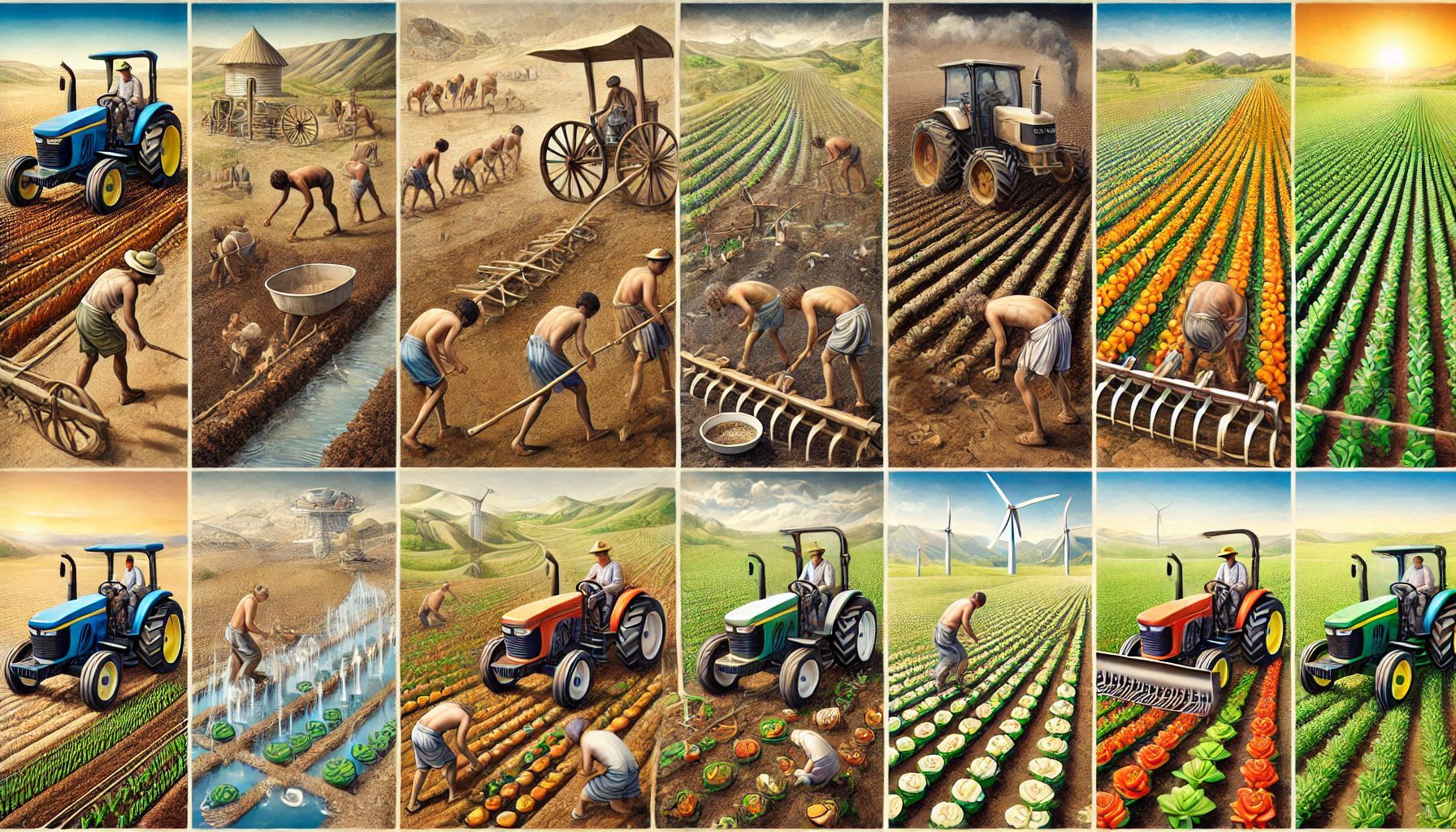Stages of agriculture development – Era of civilization- Importance of Neolithic civilization One Liner
Stages of Agriculture Development
- 12000-9500 years ago: Hunters and food-gatherers stage existed in the Indian subcontinent.
- Stone implements (microliths) were used throughout the subcontinent during this period.
- Domestication of the dog occurred in Iraq.
- Vegetative propagation was the earliest form of agriculture (e.g., bananas, sugarcane).
- 9500-7500 years ago: Wild ancestors of wheat, barley, and livestock like goat, sheep, and cattle were found.
- 7500-5000 years ago: Invention of plough, irrigation farming, and metallurgy emerged, with seed dibbling practiced in Egypt.
- 5000-4000 years ago: Harappan culture thrived, with wheat, barley, and cotton cultivation using plough and bullocks.
- Wheeled carts were commonly used in the Indus Valley.
- Harappans also invented methods for ginning, spinning, and weaving cotton.
- 4000-2000 years ago: Bone/stone tools and copper axes were found in places like North Arcot and Nevasa.
- Crops like wheat, lentil, and mung bean were grown in various regions.
- 2000-1500 years ago: Tank irrigation systems were widely developed and practiced.
- Greek and Romans traded with South India, importing pepper, cloth, and sandalwood.
- Chola King Karikala (190 AD) built a 160 km embankment along the Cauvery River and promoted agriculture.
- 1500-1000 years ago: Extensive cultivation of cereals like wheat, rice, and millets under the Kanauj Empire of Harshavardhana.
- Persian wheel was used in irrigation during Harshavardhana’s reign.
- South Indian kingdoms, including the Cholas, developed new irrigation systems.
- 1000-700 years ago: Arab conquest of Sind in 711-712 AD impacted agriculture, with Arabs bringing gardening expertise.
- Alauddin Khilji (1290-1320 AD) destroyed agricultural prosperity in India, keeping farmers poor.
Era of Civilization
- Human evolution began around 1.7 million years ago with Homo erectus.
- Homo sapiens evolved from Cro-Magnon man, and Neanderthal man was prevalent in Europe and Asia.
- Modern Homo sapiens sapiens spread globally after the last glacial period (~10,000 years ago).
- 8700-7700 BC: Man began domesticating sheep and goats, marking a shift to settled life.
- Neanderthal man was a primitive form of Homo sapiens found in Europe and Asia.
- The Stone Age is divided into Paleolithic, Mesolithic, and Neolithic periods.
- Paleolithic Period (2,50,000 to 10,000 BC): Early humans were hunters and food gatherers, using basic stone tools.
- Mesolithic Period (10,000 to 3,700 BC): Characterized by microliths, and domestication of animals began.
- Neolithic Period (7500-9500 BC): Early agriculture began, with humans living in settled villages.
- The Neolithic Revolution began in the Fertile Crescent, bringing changes in food production techniques.
- Neolithic culture in India included the use of polished stone axes, hand-made pottery, and weaving textiles.
- Rice, bananas, yams, and millets were cultivated in different parts of India during the Neolithic period.
- The Bronze Age (Chalcolithic culture) marked the use of copper and bronze tools alongside stone tools.
- Agriculture shifted from hilly areas to river valleys during the Bronze Age.
- Iron Age began with the arrival of Aryans, using iron tools for farming.
- Sickle was the primary harvesting tool during the Iron Age.
- Iron ploughs, sickles, and hoes were used for farming in the Iron Age.
- Domesticated animals included sheep, goats, cattle, and elephants during the Iron Age.
Importance of the Neolithic Civilization
- Neolithic Revolution allowed for the transition from nomadic life to settled agricultural societies.
- Permanent settlements were established, leading to the growth of villages and towns.
- Food surplus created by agriculture allowed societies to develop arts, culture, and technology.
- Domestication of plants like rice, wheat, and barley helped ensure food security.
- The Neolithic period saw the emergence of more complex social structures.
- Technological innovations such as pottery, weaving, and agriculture were crucial to early civilization.
- Agriculture during the Neolithic age laid the foundation for the rise of cities and trade networks.
- Social differentiation began as a result of the specialization in tasks such as farming, tool-making, and trade.
- Cultural and religious practices also evolved as communities settled and grew in size.
- The Neolithic period marks the beginning of human attempts to control the environment through farming and domestication.










